We did not see anything in the first two locations that we checked, but our third location was a success! Many Yellow-spotted salamanders (Ambystoma maculatum) and Blue-spotted salamanders (Ambystoma laterale) were found crossing the road, along with Spring peppers (Pseudacris crucifer), Leopard Frogs, and many worms!
As we drove down the road, we did our best to move all of the salamanders and frogs across the road to the direction they were headed to. Sadly, we also saw a lot of dead salamanders and frogs and worms on the road from being ran over by cars.
Both Yellow-spotted and Blue-spotted Salamanders belong in the family Ambystomitidae (Mole salamanders) and members of this family are stout-bodied with short and rounded heads.
Yellow-spotted Salamanders is a relatively large Ambystoma (15 to 25 cm long) and is found in southern Canada and eastern US. There is quite a variation in its breeding timing depending on the populations' location. Populations in southern regions may breed as early as December, while northern regions may not breed until April. Breeding in northern populations is highly synchronized and restricted to major breeding bouts following periods of rain.

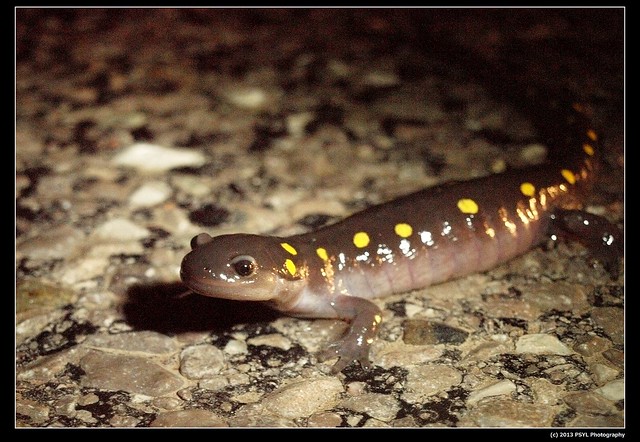
Researches showed that Yellow-spotted Salamanders display site fidelity and can return to the same burrow where they migrated from. The specific cues for orientation during migration is not well understood, but olfaction may be one of the cues.

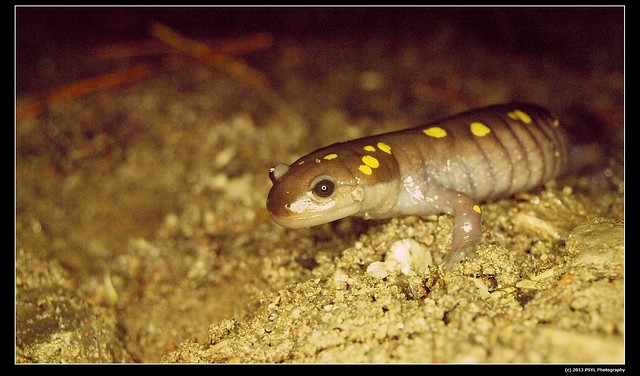
Loss of vernal pools due to deforestation and urbanization will affect many Ambystoma spp. as the populations become more isolated from each other. Some populations are also affected by acidification, and low pH may reduce hatching success and larval growth and development. Yellow-spotted Salamanders is an ideal species for long-term amphibian monitoring because it is so widespread and well-studied.
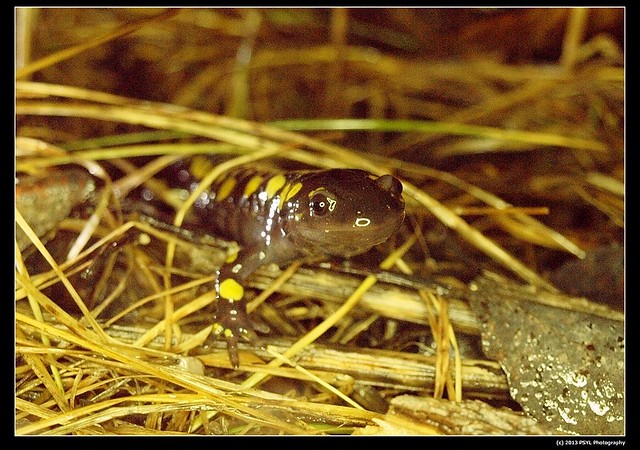
Blue-spotted Salamanders are small and slender, and the adults have blue blotches and flecks on the dorsum. Mature adults are about 7.5 to 13 cm long, and males are smaller than females with longer tails, relative to body length. Sexually active males have laterally compressed tails and swollen vents.
Blue-spotted Salamanders are consider to be an explosive breeder, with major breeding bouts depending on weather patterns and local conditions. Even though they are common in its range (southeastern North America), deforestation and habitat destruction and alteration will have significant negative consequences on their breeding grounds.
Spring peepers
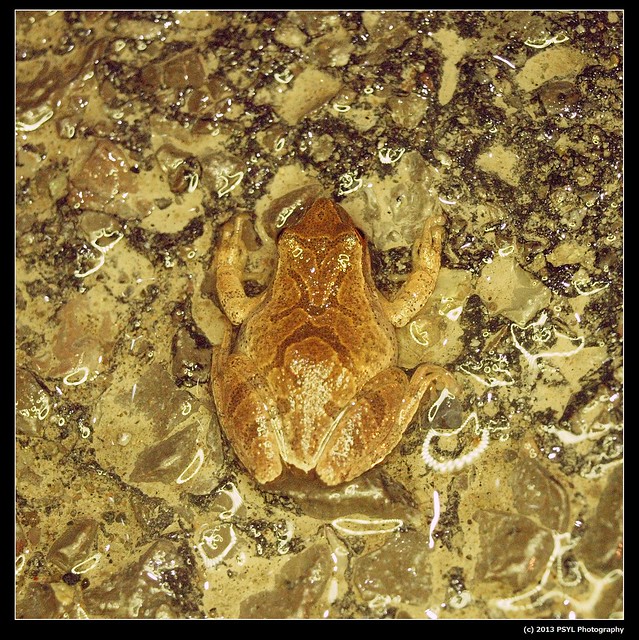
"Cross" on their dorsal is an distinguishing feature.
All of the information about mole salamanders come from the book "Salamanders of the United States and Canada" by James W. Petranka.


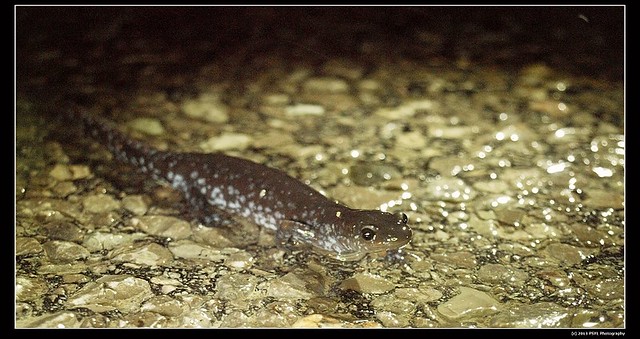
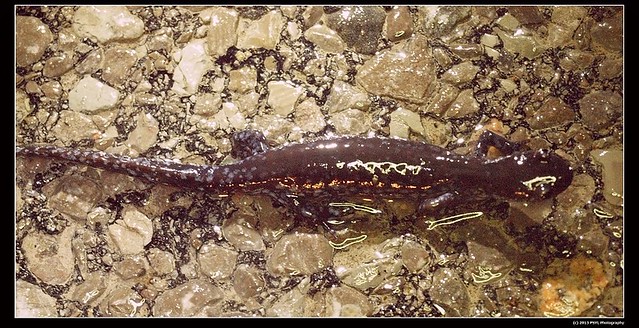
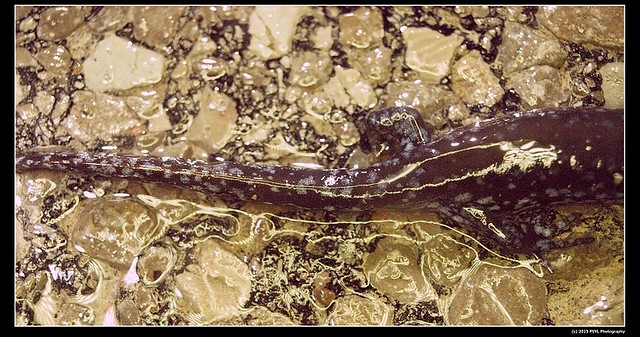
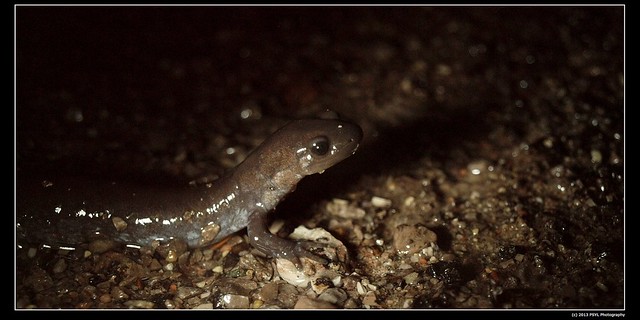
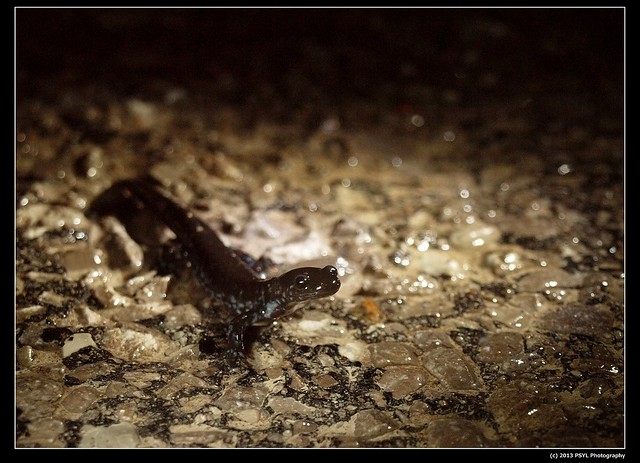
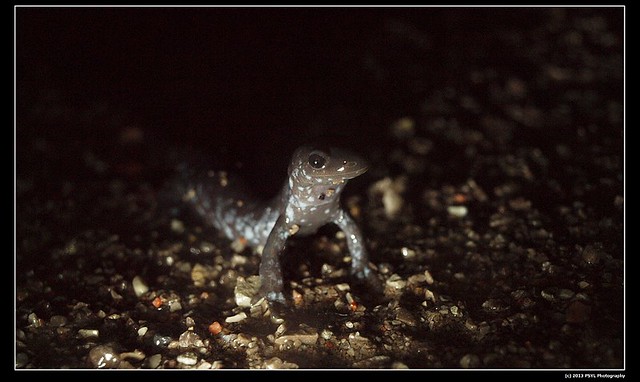
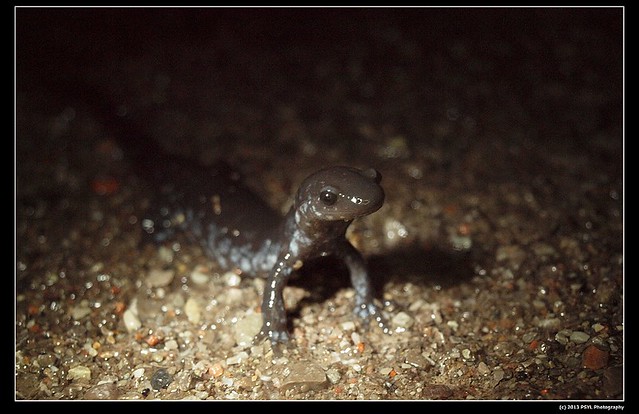
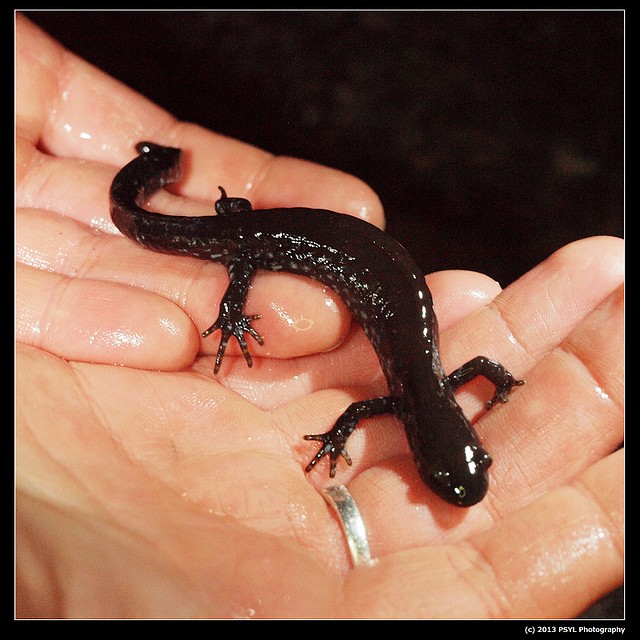
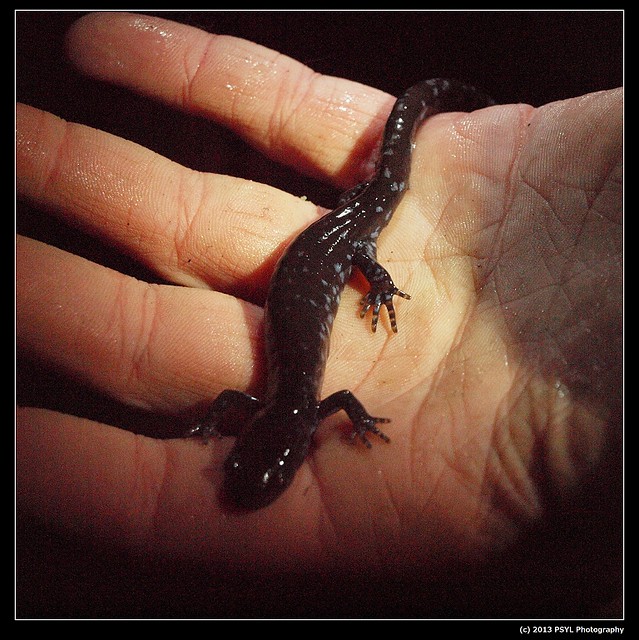
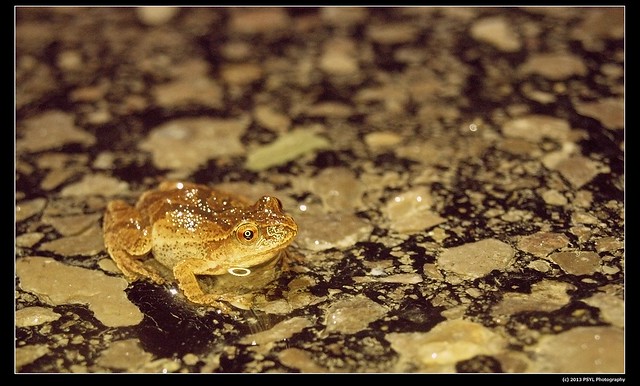
No comments:
Post a Comment